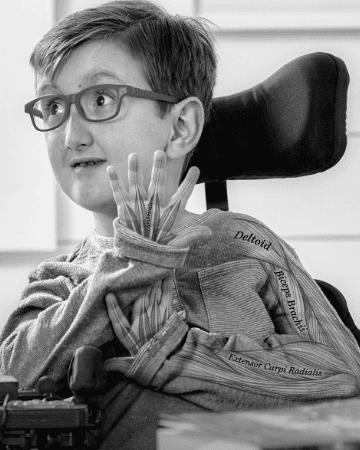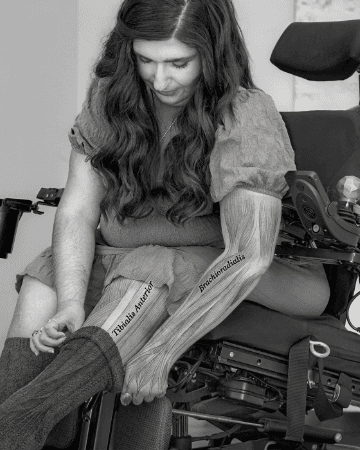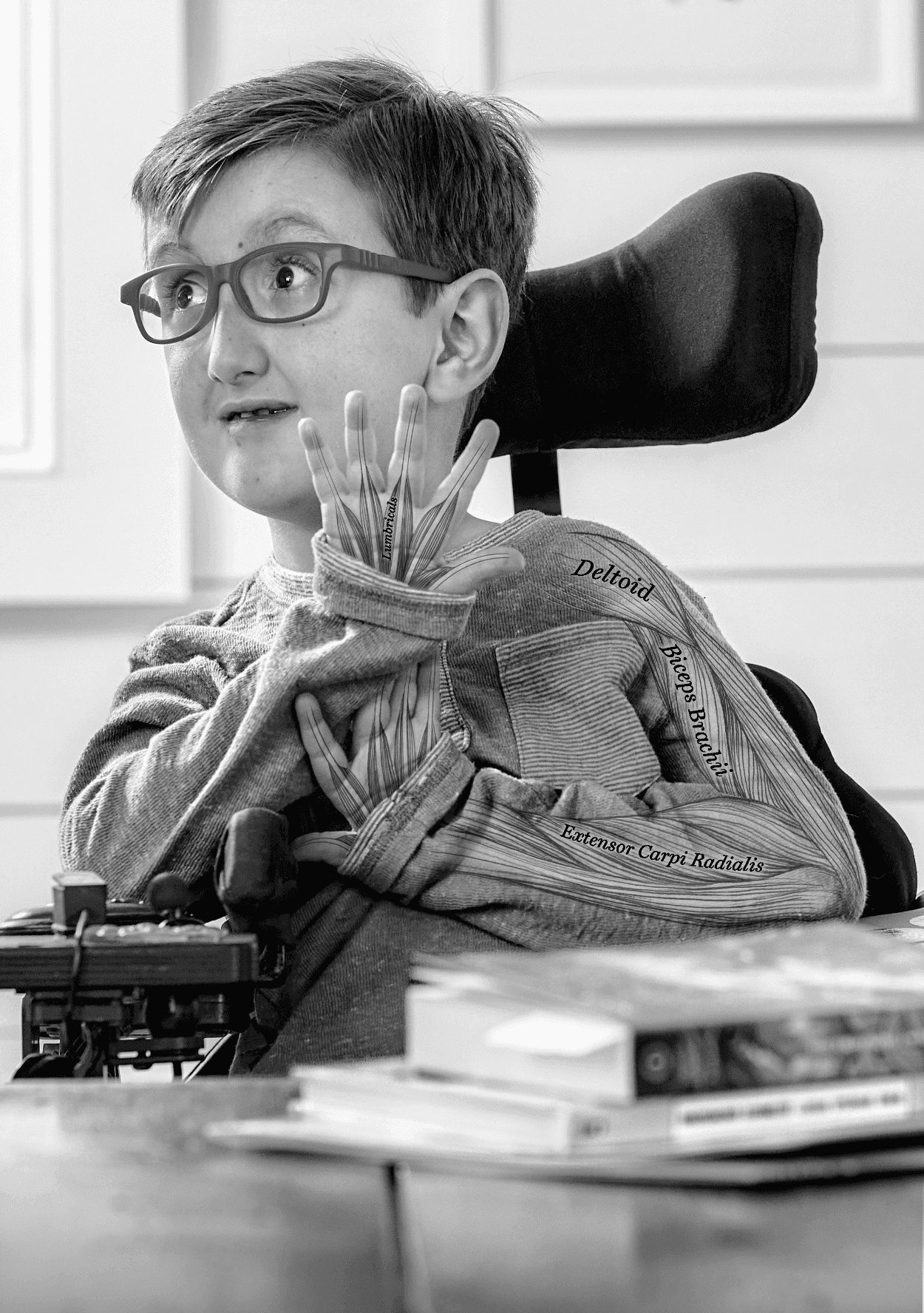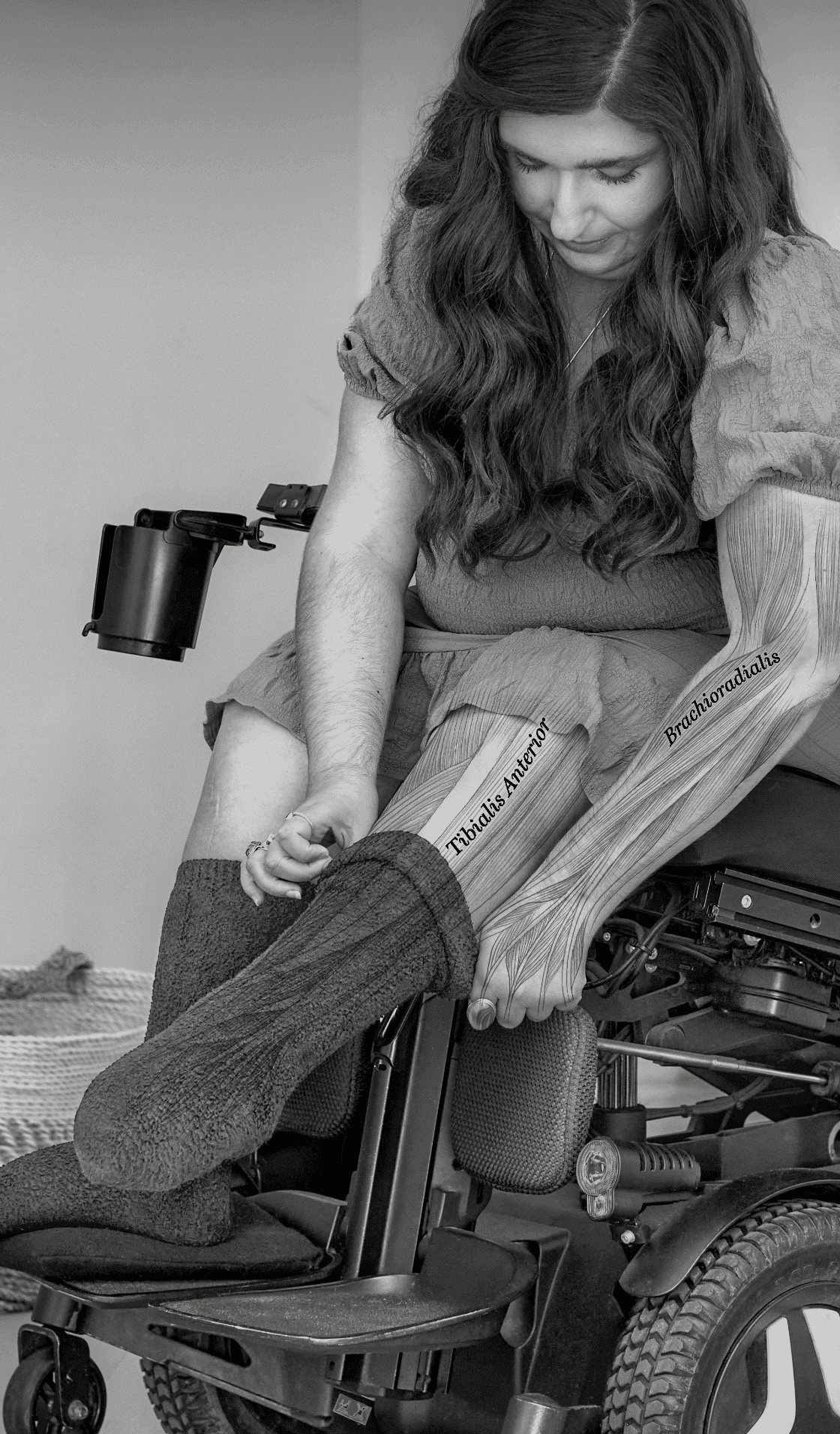striving forstrength
Seeing SMA through
a new lens
Today, approved medications focus on increasing production of survival motor neuron (SMN) proteins to help people with spinal muscular atrophy (SMA) live longer and—to an extent—improve motor function. But these treatments don’t directly address the muscle. As time passes and SMA progresses, it’s not just motor neurons that are lost. Muscles often continue to atrophy, causing motor function to decline and creating a downstream impact on daily living.

Mckenna, 16
Living with SMA
On an approved SMN-targeted treatment for 8 years
a future focused on muscle
The future of SMA treatment will build on SMN-targeted therapies in hopes of gaining both muscle strength and motor function. Not only would this potentially help address progressive muscle weakness, but it could also impact quality of life.
Muscle growth: A system of checks and balances
Normal muscle growth and motor function depend on a system of checks and balances. When muscles are used, they increase the production of proteins that enhance muscle growth. When they are not used, muscles decrease protein production and muscle growth is slowed.
Muscle use promotes growth

Growth slows without use
MYOSTATIN: A NATURAL BRAKE ON MUSCLE GROWTH
Myostatin is naturally occurring protein involved in this system of checks and balances. Its job is to inhibit muscle growth, or act as a “brake” to keep growth in check. Myostatin is in everyone’s body, primarily found in the skeletal muscles that enable voluntary movement. Though it is not a cause of neuromuscular diseases like SMA, scientists are studying whether treatments targeting myostatin can help address progressive muscle weakness.


WHAT CAN WE LEARN
ABOUT MYOSTATIN FROM
THE BELGIAN BLUE COW?
The Belgian Blue breed of cattle has a natural mutation in the myostatin gene which leads to unchecked muscle growth.
IS TARGETING MYOSTATIN A POTENTIAL APPROACH TO ADDRESSING UNMET NEEDS IN SMA?
Myostatin has long been a subject of research, and scientists have found that inhibiting it, or limiting its ability to do its job, could release the brake on muscle growth.
In SMA, where an important goal is to stop or even reverse muscle weakness, myostatin has understandably attracted significant interest. Research continues to look for optimal ways to specifically target myostatin to help address muscle weakness in SMA.


If the challenges of targeting myostatin can be addressed, it may provide a potential muscle-focused approach in SMA.

Bear, 10
Living with SMA
On an approved SMN-targeted
treatment for 9 years
Muscles: move them and use them
Muscles are a complex system, and they work together to help you perform any movement or activity of daily living, from using your arm to wave hello to using your voice to say, “Hi.”
Experts agree that using your muscles in a rehabilitation program consisting of exercise, stretching, and joint mobilization is important for preserving function.
Today, there are two main approaches to managing SMA: medications and physical therapy (PT). Therapeutic approaches that target muscle may be an opportunity to help address unmet needs in patients living with SMA.
SMN-targeted treatments help address motor neuron loss
Physical therapy helps preserve muscle strength
Other muscle-focused approaches could potentially help manage progressive muscle weakness
See what people living with SMA are hoping for in the future
Watch now ►“Just like any parent, we want more for him. We want him to be able to do more things himself, interact more with other people, hang out with his friends.”
-Kevin, caregiver of a child living with SMA
Evolving treatment goals
Since the introduction of SMN-targeted treatments in 2016, people living with SMA continue to look for more—more muscle strength, more motor function stability, and more out of life. These SMA community-driven expectations have been heard by researchers, and new approaches to address SMA are actively being explored today.

Lyza, 23
Living with SMA
On an approved SMN-targeted
treatment for 8 years
In a Cure SMA Survey of over 300 participants, the top thing people living with SMA wanted was MORE MUSCLE STRENGTH.*
cited gaining muscle strength as the most important unmet need they hope new therapies will address
*Data from 2024 Cure SMA Community Update Survey of people with SMA and caregivers (n=311).


In the SMA community, conversations about goals and needs are always happening. Continuing these conversations with your doctor may help inform personalized, well-rounded treatment goals.
“Gaining ability in muscle function has an extreme impact, and it changes what’s possible. It changes opportunities, it changes independence.”
-Lyza, living with SMA

The course of SMA is shifting—and the community has the power to keep it moving in the right direction. That path starts with a focus on improved muscle strength and increased independence.
Talk to your doctor about your treatment goals and muscle
Get the e‑newsletter
Hear more about the SMA community’s evolving goals, and the need to preserve and strengthen muscle.
sign up

